Media | Articles
Neon-Lined and Tuned In: Denise McCluggage Embodied Greatness as Both Racer and Writer
Fresh out of Mills College in Oakland, California, Denise McCluggage put the San Francisco Chronicle’s Sunday magazine to bed one night in the early summer of 1947, then set out in her tiny black MG TC—the first car she fell in love with—to relax, sip a Coke, and listen to some live jazz at a club in town.
As she recalled in a 1987 column in AutoWeek, she was heading home late that night when she saw a couple of guys in a dark Mercury following her. “And no way was I going to lead that lot to my house.”
She knew what to do. Growing up in Kansas, “We had a game called ‘Ditch ’em … at Go!’” This was a kind of game of tag where you ran “over fences, through backyards, to ‘ditch’ those in pursuit … What fun!
“Around a corner, up through the gears … cornering fiercely,” she wrote of driving to escape the Merc. “Should I be scared? Probably.”
Did she ditch ’em? Of course she did.
Marketplace
Buy and sell classics with confidence
From her birth in El Dorado, Kansas, on January 20, 1927, until her death on May 6, 2015, in Santa Fe, New Mexico, McCluggage lived for what she called “those clear neon-lined moments of being truly tuned in.”
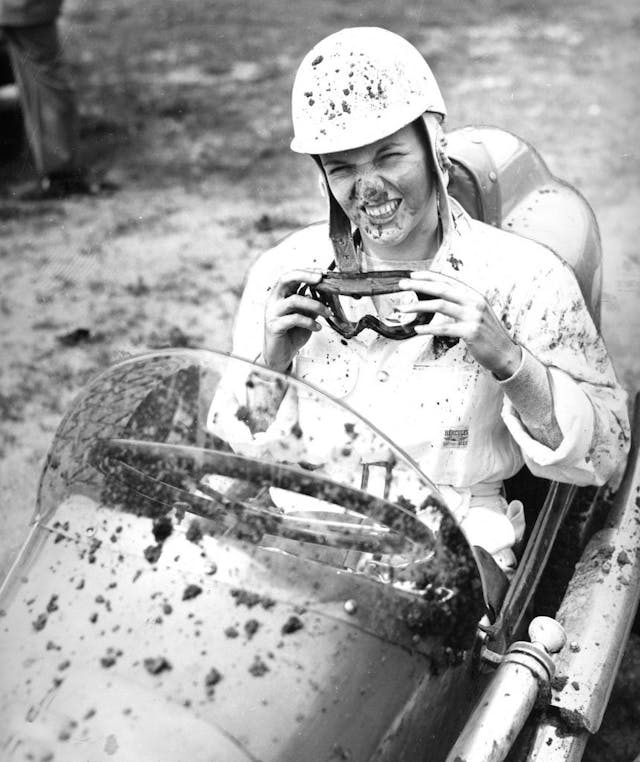
She drove for Briggs Cunningham, the America’s Cup yachtsman and Le Mans competitor, who raced his own cars and fielded many others. McCluggage and Ruth Levy co-drove his Porsche 550 RS at Caracas in 1957. She raced at the Nürburgring three times, though her only finish was in 1958, in an Alfa Romeo Giulietta Veloce. In 1959, she won at Lime Rock in an OSCA. In 1964, she scored another class win at the Monte Carlo Rally, driving a Ford Falcon Sprint. In 1967, her last year as a professional, she and Marianne “Pinkie” Rollo drove Chinetti’s NART Spyder to 17th place. Of the seven Ferraris at Sebring that year, theirs was the only one to finish.
Her best showing in a Ferrari, though, came in 1961. Driving her own Ferrari, she won the GT class at Sebring. Her co-driver that year was jazz musician Allen Eager. She’d tell the story, grin, and say, “I like making men’s fantasies come true.”
About that car: It was an alloy 250 GT SWB Competizione, today worth between $14 million and $15 million, if you can find one. “It was not only the only car I had—it was the only thing I had. I lived in a five-flight walk-up, late Salvation Army furniture, orange crates. But I had a Ferrari. My priorities were straight.”
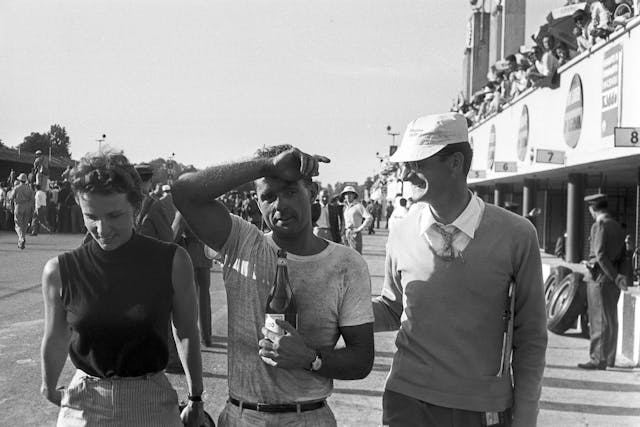
Though less-centered drivers were relegated to her rearview mirror, it was hard to get her to pass judgment off-track. Mostly. McCluggage knew talent. To her eyes, five-time F1 champion Fangio was grace incarnate. “Fangio was the best,” she said. “He was just so ‘there’ that he didn’t look like he was racing.”
McCluggage had that “there-ness,” too, that energy, that concentration. As she put it, she “had the knack.”
According to George Levy, president of the Motorsports Hall of Fame of America, “McCluggage, as much as anyone, was responsible for the spectacular rise in popularity of sports car racing in the U.S. in the late ’50s and 1960s,” he says. “Everyone she met respected her and appreciated her not only for her vast intellect—she was one of the smartest and deepest people you’ll ever meet—but for her charisma and magnanimous spirit.”
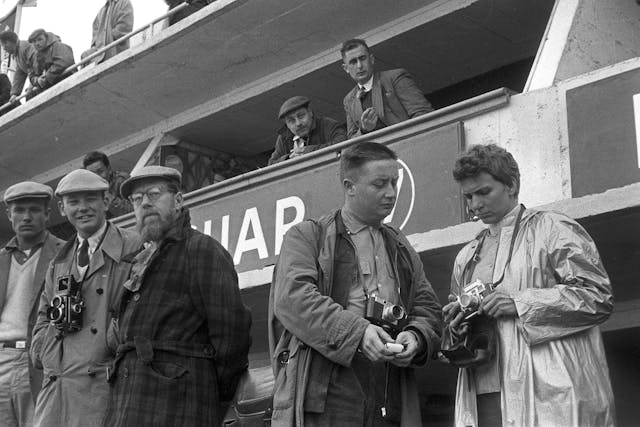
McCluggage did more than pal around with such luminaries. “I first saw Steve McQueen in front of Joe’s Luncheonette on West 4th St. in Greenwich Village,” she recalled in AutoWeek in 1981. “He wasn’t S*T*E*V*E*M*C*Q*U*E*E*N then, just Steve McQueen, Village hang-about.”
At the time of this sighting, in 1955 or ’56, McCluggage was writing for the New York Herald Tribune and driving her second MG TC. McCluggage recalled that McQueen was leaning against his own, cream-colored MG TC and “holding a new leather-covered racing helmet and telling someone how some friends of his in England had sent it to him,” she wrote. “I stopped to listen and stayed to talk.” The conversation continued “over toasted bran muffins and at my five-flight walk-up around the corner.”
They became an item. Her and His MG TCs “parked nose-to-tail on Cornelia Street didn’t go unnoticed,” she recalled.
Eventually, McQueen went off to L.A. and became a star, getting his breakout role in 1958 in the CBS TV series Wanted Dead or Alive. By then, McCluggage was well launched on her racing career. She bought a red Jaguar XK140 MC and ran her first SCCA race in 1956.
In the foreword to McCluggage’s book By Brooks Too Broad for Leaping, Hill wrote that her “record is well known, with successes in automobiles as varied as Ferraris, Porsche, OSCAs and Ford Falcons on surfaces as diverse as Sebring’s flat-but-bumpy runways, the Nürburgring’s many twists and curls, and the rally circuit’s snowy mountain passes. But there was another dimension to Denise’s success … engaging males on their exclusive turf.”

In 1957, at Bahamas Speed Week, she shared a room with Ruth Levy, who was also her opponent in the “Ladies Heats.” Levy came back the night before their first race, McCluggage recalled in AutoWeek, “after having been out with Stirling Moss”—and with the loan of Moss’s 3.0-liter factory Aston Martin for their race the next day. McCluggage would be driving a far meeker 1.5-liter Porsche.
Unfazed, McCluggage bided her time, picked her spot, and zipped past Levy just where she had planned—three turns before the finish, when it was too late for Levy to bring the Aston’s superior power to bear. McCluggage won by a nose.
In the second heat, McCluggage led by several car lengths, but Levy kept coming. It loomed in McCluggage’s retelling of the race: “There in the mirror, the green Aston growing bigger and greener.” But she had a plan.
“Already I was beyond my cut-off point and she kept coming on the inside—accelerating, not braking. I wasn’t about to turn in front of her, she’d collect me as a hood ornament.
“So I held my straight line deep into the turn, braking to a near stop. And whoosh! Ruth whipped by me, straight off the end of the pavement and disappeared into the brush. I scrambled around the turn, took the checker and then dashed back to the place where Ruth had put a dark hole into the underbrush.”
Levy wasn’t seriously hurt, but Moss’s Aston was totaled. He borrowed a Ferrari for his own race—and won it.
“In the hospital, someone asked Levy if she’d run out of brakes. ‘No,’ she said. ‘Brains.’”

Davis’s praise is one thing, but he was hardly alone in recognizing her genius, and McCluggage was the first journalist inducted into the Automotive Hall of Fame, outside Detroit, achieving that feat in 2001.
After she moved to Santa Fe in 1978, McCluggage founded a concours that drew many of her legendary friends as judges or panelists, from Sir Stirling Moss to Phil Hill.
The event faded away after her death in 2015, but her legacy—her evocation of sinuous roads, enticing us into the next climbing bend and the next, will not be forgotten. On March 8, 2022, Denise McCluggage was celebrated and inducted into the Motorsports Hall of Fame of America, in Daytona Beach, Florida.
The selection “is decided by a straight vote among 200 of the greatest names in motorsports: Mario Andretti, Richard Petty, Shirley Muldowney, Parnelli Jones, and Hélio Castroneves, among many others,” George Levy says. Those lucky enough to have known and loved McCluggage are just beginning to fully understand and appreciate the depths to which she touched our lives. She was blessed with talents and riches far beyond those that land exotic cars in our driveways and garages.
And she had a wonderfully dry wit. Someone once said to her, “If you’d kept all the cars you’ve had, you’d be a millionaire.”
“No,” she retorted. “If I’d been a millionaire, I’d have kept all the cars I’ve had.”
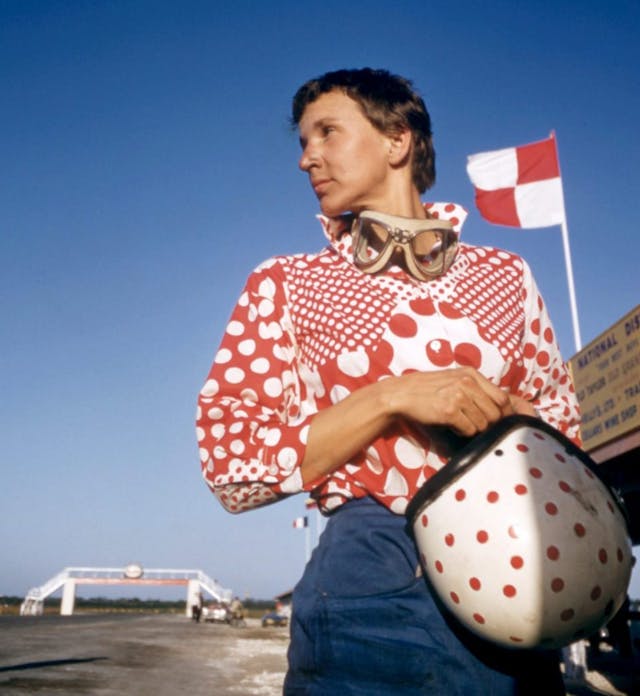
***
Chasing Denise
Denise McCluggage was one of several women of her generation who blazed a trail in the “man’s game” of auto racing. If McCluggage lit the torch, legions of women now wield flamethrowers. Here, we highlight four to follow. —Cameron Neveu
Formula 1
If you’ve watched Netflix’s Formula 1: Drive to Survive, you know Jennie Gow as an insider commenting on the high-stakes world of F1. But Gow is more than just another media personality. She broke into broadcasting F1 races on the BBC, then became the lead host and presenter of Formula E in 2014. In 2021, Gow began pioneering in yet another genre as lead presenter of the new racing series Extreme E, a mashup of Formula E and rally racing, where a common-platform electric off-roader is co-driven by a female and male driver at locations worldwide. You can catch the show on FS1 in the U.S., Euro-sport in most of the EU, and the BBC in the U.K.

NASCAR
Hailie Deegan began racing at 8 years old. By 17, she was competing—and winning—in NASCAR’s regional stock car series, notching her first win before she was old enough to vote. She nabbed two more checkered flags during her sophomore campaign. In 2021, Deegan graduated to NASCAR’s truck series, where she was voted Most Popular Driver at year’s end. For 2022, Deegan is back in her Ford F-150 race truck, gunning for her first win in the series.
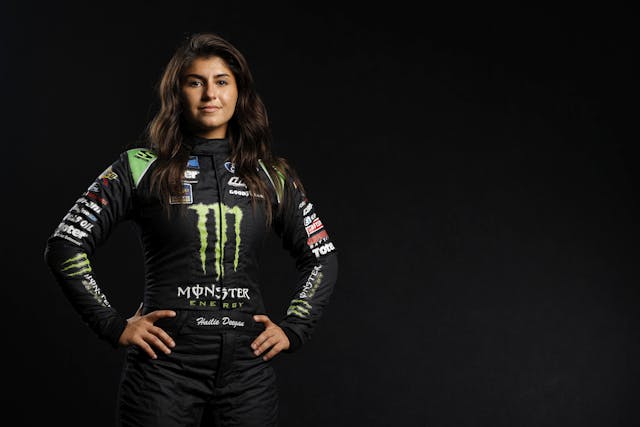
IMSA
If any racer embodies McCluggage’s mastery of all genres of racing, it’s Katherine Legge, who has battled in Champ Car, DTM, IndyCar, and NASCAR, as well as nailing a podium in the Rolex 24 Hours of Daytona. Legge, like McCluggage, has cut her own path, racing against the guys when she was a junior (including the likes of Jenson Button and Lewis Hamilton) and later in 2005, still beating the boys in many classes. Today, she competes in the IMSA WeatherTech SportsCar Championship and also serves as a member of the Women in Motorsport Commission of the FIA.

IndyCar
Simona de Silvestro may not be as recognizable as Danica Patrick, but she’s arguably more successful. The 33-year-old Swiss driver is expected to make her seventh run in the Indianapolis 500 this spring, and de Silvestro was the first woman to score points in Formula E; she also became the first woman to race full time in the Australian Supercars Championship. In addition to IndyCar, de Silvestro is again in Formula E with Porsche.
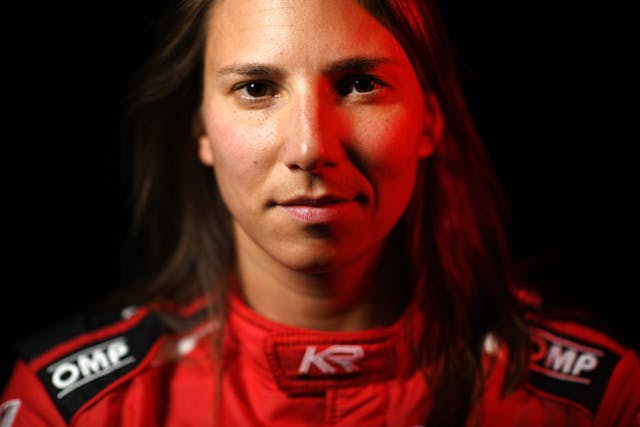
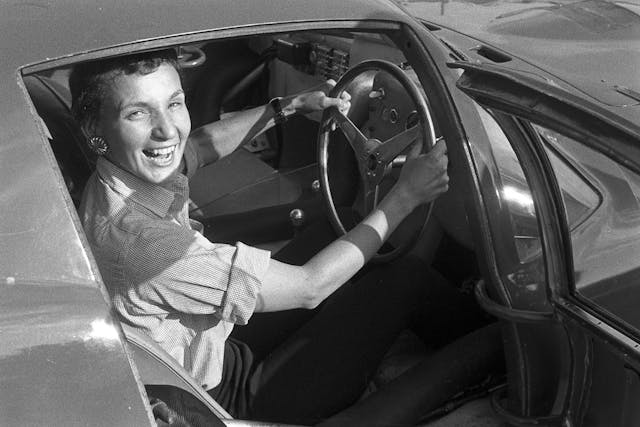













One of the best things I have ever read was her Autoweek column when one of the new 911s came out (mid 90s I would guess). She & Hurley Haywood made a cross country trip in one. Fantastic, poignant, & touching.
I always looked forward to Denise’s articles in AutoWeek.
I wish someone would take her articles from AutoWeek and combine them into a book. I bet it would sell quite well.
Jay, I was thinking same. Much like Peter Egan’s from Road & Track and Cycle World ( Leanings ). I’m a car guy vs bikes yet is story telling style is just a compelling on 2 wheels vs 4. Denise’s collection would be simply brilliant and I would want to be first in line for one. Terrific idea
It was a mistake not to mention Amy Ruman, the only ever female Trans Am Champion who won the crown twice.
I had the great good fortune to work with Denise on several occasions, the first when we went to Detroit for the 2000 Auto Show, and again later that year for the Le Mans 24 hours. Our paths last crossed in the media center at the Indianapolis Motor Speedway.
In my many years of covering motorsports, I don’t think I’ve met a more colorful, interesting, and sincere personality. She shared so many stories of her life and her friends, photographs that she’d taken, and I was blessed to be able to call Denise a friend. What a charming person.
Thank you for such a nice piece on her, Jan.
How I miss her “Tuesday Car Table” at a great restaurant in Santa Fe. Anyone who enjoyed cars and stories were welcome. Living an hour south of Sant Fe it became a regular weekly lunch. Met many interesting people and drove numerous press cars. 😉